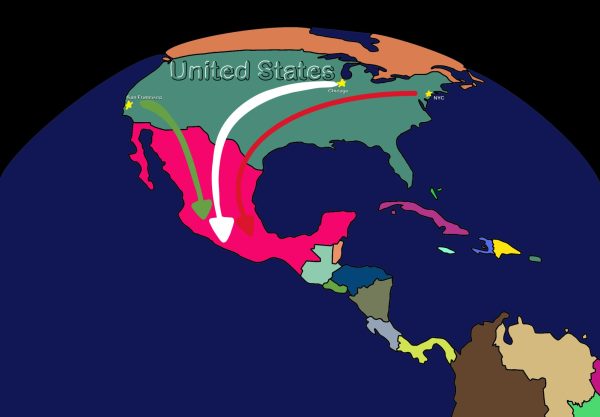On January 26, just six days after Donald J. Trump became president, his impact was felt across the country. A couple sought shelter in their attic while Immigration and Customs Enforcement (ICE) agents patrolled nearby. Images surfaced of Republicans posing with ICE officials. This was a common sight throughout the Chicagoland Area, as tensions rose in the wake of Trump’s inauguration. On that day, ICE announced the arrest of 950 undocumented immigrants, with Chicago Police Superintendent Larry Snelling reporting that 100 of these arrests happened in the Chicagoland region. However, a month later, details about those detained and the reasons behind their arrests remain unclear, as agencies have refused to provide comprehensive information. The only way to gather information is through the accounts of the detainees themselves. The Chicago Tribune, the local newspaper, has uncovered logs to illuminate the situation. This is the story of the Chicago ICE arrests.

What is going on?
The Tribune has discovered that undocumented immigrants often wait weeks, even months, before appearing before a judge; in contrast, under Illinois law, criminals are required to see a judge within 48 hours. Political scientist Jacqueline Stevens states, “Many rights and expectations people have of courts are impeded by the flawed immigration court system.” TRAC data indicates that the number of ICE arrestees in detention surged during the initial weeks of the Trump administration. However, experts suggest the actual numbers might be higher due to logistical challenges faced by Trump. Stevens commented, “They boast about the deportation numbers they aspire to achieve, but when showcasing a few cases, they lack the detention capacity to meet those goals.” To gather more information, the Tribune examined detainee data from two jails in the Midwest housing individuals from the Chicagoland area. Between January 26 and February 2, about 200 federal detainees were booked at the Clay County Justice Center in Indiana and Boone County Jail in Kentucky. Of the nearly 200 detainees analyzed by the Tribune, around half were not found in any databases. The investigation revealed that these detainees were mostly young adults and seniors residing in urban and suburban neighborhoods. Approximately 50 detainees had connections to certain crimes in Chicagoland, including misdemeanors and minor felonies. Examples of felonies cited to justify the arrests include one individual from Illinois sentenced to 30 months for attempting to steal millions from a supposed drug fund in California in 2022 and another Illinois man who sexually assaulted a minor the same year. Although these crimes are serious, the numbers committed are low. The Others had minimal criminal records, such as retail theft and drug possession. Despite the Trump administration’s claim to prioritize dangerous criminals, the number of undocumented immigrants arrested by ICE with little to no criminal history has increased. As of February 9th, 14% of those arrested had no criminal record, up from 6% by the end of January.
